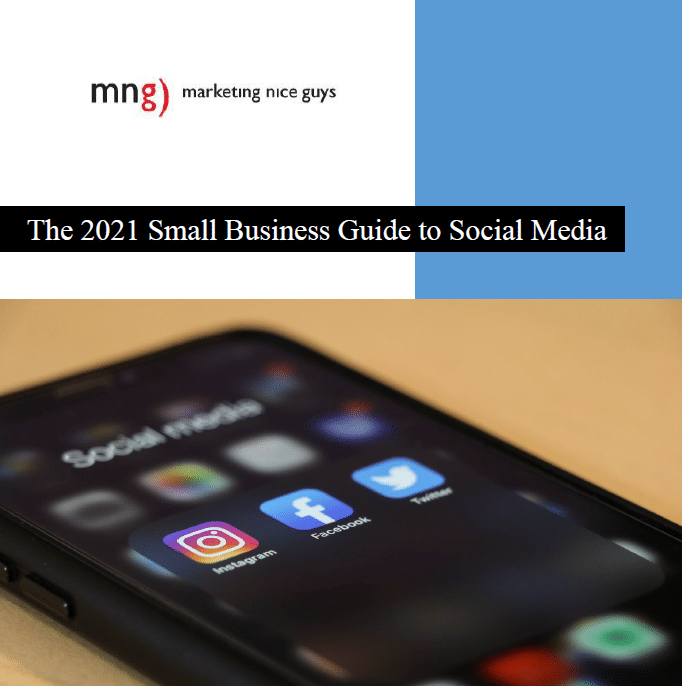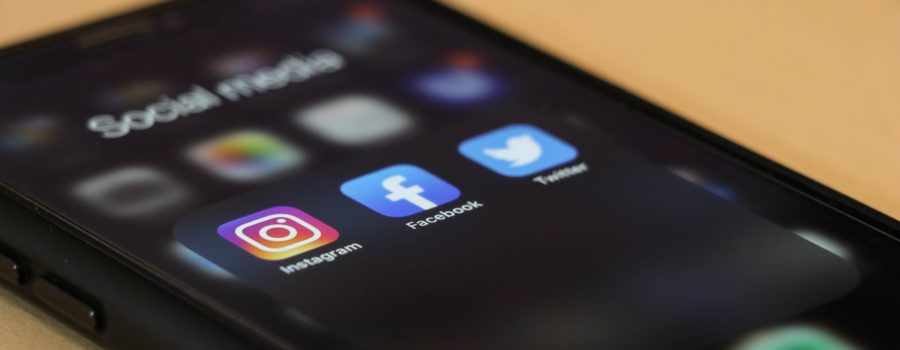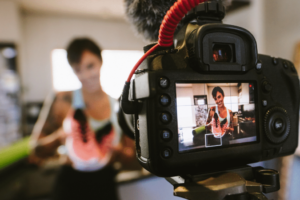We often say that social media is one of the biggest conundrums for many businesses. The main reason is that having followers doesn’t always equate to having customers. Add on top of that the challenge of even gaining followers in social for many businesses, and it becomes even more of a vexing issue. Many small businesses, in particular, begin to wonder if it’s even worth the effort.
Are there success stories? Of course. Some businesses are built solely on their social presence. If you’re in retail, fashion, or sell great-looking products and services, you most certainly should take advantage of the platforms available to you. But for everyone else, it becomes a bit murky. We’ve seen even large companies fail when it comes to maintaining a presence in social on some channels. If you’re stuck, here are a few common threads we’ve seen as to why companies’ social media efforts stall (continued below the free download).
2021 Small Business Guide to Social Media Free Download
Fill out the form to download “2021 Small Business Guide to Social Media.”
The guide will be emailed to you.

1. You don’t have a social media strategy or a plan.
Social media is one of those areas of marketing where companies often direct employees to “do it” because they feel they need a channel. But if you don’t have an established strategy for what you’re trying to accomplish, you can end up with a mish-mash of posts that have no direction, theme or consistent content that your audience will react to. For example, we recommend thinking about the following before you dive in:
- What is the overall goal for social? If you’re a B2C business or a retailer of some kind it might certainly be within your expectations to drive direct sales revenue. If you’re a B2B business, more realistically, you might think about social driving awareness of your brand and / or your product and services. Setting the right goals will help you stay committed to the various social platforms should you decide it’s for you.
- What are the KPIs based on the goals? How do you know if you’re successful? This is where setting the key performance indicators will help you, as well as any previous benchmarks for performance (if you have them). The KPIs tell you how you’re progressing. So, if the overall goal is to drive X amount of revenue from social, your KPIs would certainly include that end goal but also might include indicators such as impressions, click-throughs, and landing page views. Keeping track of those things will give you insight on where there is potential fallout. Do you need to increase the impression goals to meet the overall? Do you need to boost the content? Do you need to adjust or optimize the landing pages? The more data you look at, the more you’ll be able to pinpoint how to best optimize as you go.
2. You’re not dedicated or focused on the audiences for each social platform you’re on.
What we mean by that is that either you’re stretched too thin or you just haven’t committed the necessary resources in that channel to succeed. One thing to keep in mind is that if you’re going to start posting on a particular social media platform, you have to be willing to dedicate the time and resources to make it good. One of the big mistakes that brands can make in social is that they create accounts and then don’t fill them with anything. And it’s not just text copy content you need. You might require design, or photos, or videos to continue posting and creating. And then you’ll have to be active – posting, responding, social listening, and engaging with your followers. If you don’t actively do that, why should your followers invest the time with you?
- Social Currency: That content which makes your customers smarter, more interesting, or funnier when/if they pass it along to others. Social currency is a big aspect of thought leadership, which is critical for some brands in social media marketing.
- Triggers: Content that triggers a reaction because it is linked to something (If you say: “Peanut butter and…” most people will think of jelly, for example.) Triggers are super clever. Think of the famous Geico “hump day” camel commercial. Even though Geico doesn’t have the original video still running on YouTube, people still share that ad on… you guessed it, Wednesday. For social, creating your own hashtags #MustangMonday (for Ford) is an example of a trigger that reminds people about the brand every Monday.
- Emotion: Content that elicits an emotional reaction is powerful and can help create a customer’s positive association with a particular brand. The emotion can come in form of humor, happiness, even fear and sadness in the right moments. How you create emotion goes back to doing your audience research, and understanding their motivations, challenges and other psychographics.
- Public: “4 out of 5 dentists recommend Trident.” Customers want social proof that others use your products or services or that others recommend it. So, getting your customers to talk about your products, showing them using it, or getting others to recommend it all provides that proof for others to see. This is where companies can take advantage of user-generated content in social and other areas to engage customers even more.
- Practical: Perhaps the most common form of content, practical content helps people figure out how to do something. It’s the reason Home Depot shows customers how to tile a bathroom floor, or why Whole Foods provides recipe suggestions. But practical help can also come in the form of job aids, tools, and other content that helps people get along through the day or do their job better.
- Storytelling: The last aspect of STEPPS, storytelling is powerful simply because customers tend to remember stories most of all. Linked to emotional content, storytelling is one of the most popular ways companies engage audiences in social. It might be a story of how your product helped transform someone’s life, or a backstory about a pitch person that is well-known (think about Dos Equis’ Most Interesting Man in the World). Whatever the case, storytelling is a great vehicle for top-of-mind awareness.
4. You’re not analyzing what posts have worked and why.
If there’s one thing great social media accounts do, it’s modeling a social media approach on what they’ve seen work – whether that’s someone else’s posts or their own. For example, they might notice it’s a particular topic gets a lot of engagement, comments or shares. Maybe it’s the way they wrote or crafted a particular post or perhaps added a storytelling component. It could be any pattern they pick up on. Once they figure out this formula, they replicate that for future posts. And then continue to test different approaches as they go.
5. You’re not paying for ads.
Many platforms (such as Facebook) are actually disguised pay-to-play venues, even though they do have opportunities to post organically. That’s because nearly all platforms limit the reach of organic posts such that even a company’s followers might not see them in the user feed. And for those who don’t have an established brand like a Coca-Cola or Ford, it can be hard to even gain followers to your account or get more people to see your posts. Hence, using paid social to distribute content needs to be looked at here as well. You don’t need a ton of money, depending on your target audience and your goals, but you should have an idea about what you’d like to accomplish. We’d also suggest being strategic in terms of trying to boost follower growth with immediate revenue expectations. For small businesses in particular, we recommend hiring an agency like Marketing Nice Guys that specializes in social media targeting and strategy, even if your overall spend isn’t quite so much in the beginning. That’s because an agency can help guide you on the best ad types and strategies whether you’re thinking about:
- Photo ads
- Video ads
- Collection ads
- Slideshows
- App installs
- Product carousels
- Retargeted ads
- Email or messaging ads
- Account acquisition
And that’s just a small sample of what’s available. Each platform also has wildly different options and ways to reach audiences too. An agency can help you also decide where your money (and on what platform) your money is best spent. Finally, a good agency will also make sure your targeting and strategy aligns with your business and the expectations.
If you don’t have the budget to spend on an agency, you can definitely try to do it yourself. We do suggest giving yourself some time to get up to speed on a few areas, and asking the following questions:
- What are the various ad options on each platform?
- What type of targeting is available? (Demographic, psychographic, location, topic, profession/title etc.)
- What ad optimizations by objective (link clicks, landing page views, impressions, conversions) are available?
- What are the assets required for each – photo/video requirements, text/character limits?
- Measurement/analytics available?
- Does the platform allow for retargeting? What are the minimum traffic requirements for that?
- What metrics will I use for success?
One alternative here for do-it-yourselfers is to find services (such as a Marketing Help Desk that we offer) that will simply provide guidance or help review your campaigns, but at a lower monthly rate. In the end, it’s really about focusing on your return on investment and making sure the dollars you spend have the biggest impact on your marketing performance.
Conclusion
We hope the above has been helpful in your efforts to dive in or improve your current social media efforts. Our mission at Marketing Nice Guys is to help you excel at digital marketing. Contact us for a free consultation on social media or for any of your digital marketing needs.






